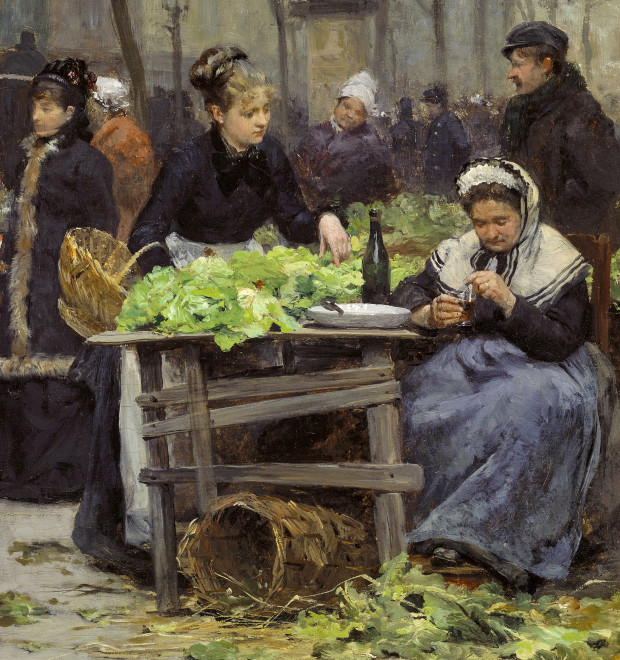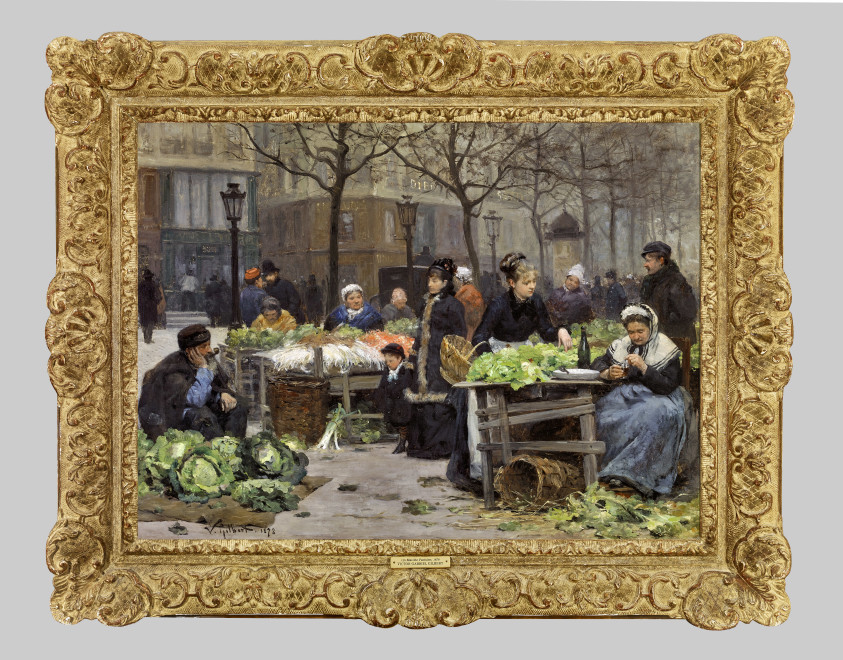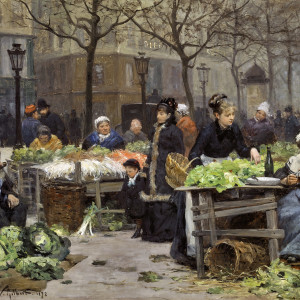46.3 by 61 cm.
At the end of the 19th century France, painters, poets, writers, and photographers all flocked to Les Halles, fascinated by its rich microcosm right in the center of Paris. Among the most regular was Gilbert, who soon became known as the “master of Les Halles”.
Provenance
Sale: Christie’s, New York, October 29, 2003, lot 146
MacConnal-Mason, London
Private Collection (and sold Sotheby’s, New York, April 18, 2008, lot 108)
Private Collection, California (acquired at the above sale)
Catalogue note
“On Rambuteau, there were gigantic piles of cabbages stacked like cannonballs with surprising regularity. The white and tender flesh of the cabbages was burgeoning like huge roses among the big green leaves; and the piles looked like wedding bouquets arranged in colossal planters. Claude stopped, screaming in admiration” (Émile Zola, Le Ventre de Paris (The Belly of Paris), 1872)
In his famous novel Le Ventre de Paris, Zola poetically described his experience walking along the aisles of Les Halles, Paris’s multi-acre marketplace. With its neatly arranged cabbages and lettuces on the market stalls contrasting with the pale green heaps scattered on the ground, our painting could be the visual equivalent of Zola’s recollection. Like in Zola’s novel, Victor Gilbert’s meticulous depiction of the market reflects a profound involvement with his subject. As a careful observer, Gilbert succeeded in making the viewer see what he saw, hear what he heard, and smell what he smelled. As a Naturalist painter, Gilbert also sought to explore the character of the various people, or “types,” who populated his paintings.
At the end of the 19th century France, painters, poets, writers, and photographers all flocked to Les Halles, fascinated by its rich microcosm in the center of Paris. Among the most regular was Victor Gilbert, who soon became known as the “master of Les Halles”. Our painting is the result of this fascination with Les Halles, however, the specific setting is more likely one of the smaller markets that uniquely identified Paris’s many individual neighborhoods. Gilbert has cropped the composition to immerse the viewer into the hustle and bustle of this miniature of Parisian society, from the vegetable sellers, the maids on errands and the upper-class lady strolling the market with her son. It is a virtuoso performance executed to create a harmony of color and composition which dignifies this daily mundane activity through the art of painting.






